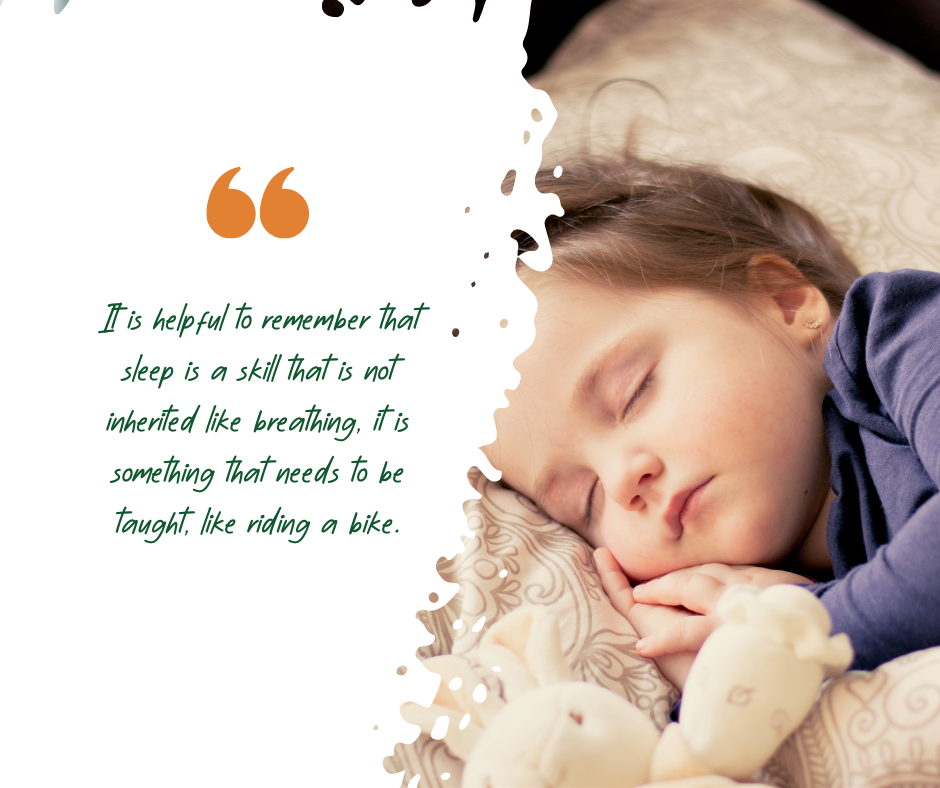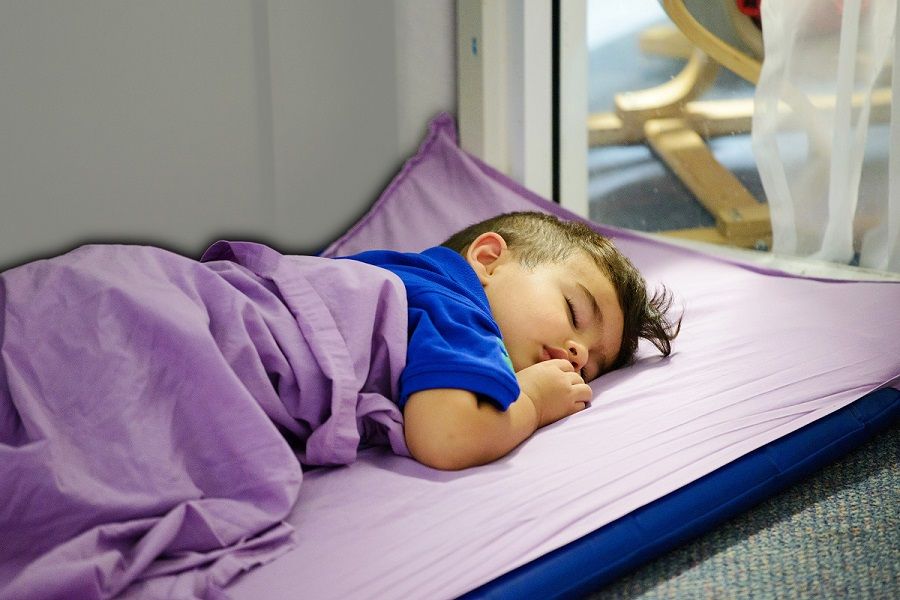Transitioning sleep at home to sleep in early learning centres
26th January, 2024
Seamlessly transitioning from home to Centre is important to support a child’s wellbeing, belonging, and inevitably all areas of their learning. It ensures children carry a sense of home so they can continue to learn and thrive within a safe and supported childcare environment.
Understanding how to best bridge this gap is founded by the relationships built and conversations fostered between teachers and caregivers. Creating and sustaining a learner-focused relationship with caregivers is not often established in one or two visiting days, but developed thoughtfully over time. Ongoing and meaningful conversations about a child’s home life, their special people and places, experiences, and family values are fundamental to celebrating what a child brings into the Centre, and how you can support this transition thoughtfully.

Regular discussions with caregivers about sleep is key to promoting positive sleep in the Centre. While standard questions surrounding sleep patterns and wake windows are helpful and relevant, it would also be beneficial to dig a little deeper and discuss wider topics about sleep.
These topics may include:
Not only do these types of questions share your interest, involvement, and support with their child’s sleep, but it also helps to build a picture of what learning that child brings with them.
These topics may include:
- How and where does your child usually fall asleep?
- What special items or routines help your child sleep (i.e. a cuddly toy, swaying together, bedtime routines)?
- Are there any sleep-phrases or songs you share with your child in their home language?
Not only do these types of questions share your interest, involvement, and support with their child’s sleep, but it also helps to build a picture of what learning that child brings with them.

This means everything a child has experienced with sleep from day one at home has been an ongoing learning journey, of how to fall asleep and how to stay asleep. Unpacking all this important information allows the uniqueness of a child’s sleep to guide our work in supporting their wellbeing within the Centre environment.
Celebrating what a child already brings to the Centre, and recognising their sleep skills is just one half of bridging the gap from home.
Just as teachers support learning in all aspects of the curriculum, we also need to facilitate the new learning that comes with sleeping in childcare. This begins with brainstorming and unpacking all the unfamiliar things that will be new learning experiences for a child.
New learning experiences may include:
- Sleeping in a room with multiple other children.
- Getting used to a floor mattress if they are in a cot or co-sleep at home.
- Building a trusting relationship with a new adult.

There should always be a reassuring emphasis on the familiar, with new elements introduced slowly and thoughtfully. The role of a teacher here is to scaffold individual children’s learning to go to sleep and stay asleep in gentle and respectful ways, and at a monitored pace. Some children may take a few days to feel safe, comfortable, and have ‘successful’ sleep in their new environment, but some may take months.
Both cases are okay, especially when teachers have regular conversations with caregivers and prioritise bridging the gap from home with familiar sleep associations, supporting individual sleep needs, and allowing time to adjust to change.
If we are critical of our own biases and opinions, we can better understand and accept potential differences in family sleep values and practices. We can then explore effective ways to facilitate sleep discussions with caregivers, and how to record and use this information for all teachers to access. Holding regular teaching-team discussions about child’s sleep will create the opportunity for collaboration and group decision making as to how to support individuals achieve quality sleep in your care, and bridge the gap from home.

Empty space, drag to resize
Have you seen Kebudel
for families?
for families?

Empty space, drag to resize
Empty space, drag to resize
Have you seen our Members Club?
Empty space, drag to resize
Cost-effective access to over 100 webinars, courses
and resources on demand.
and resources on demand.
*Special teams rates available
Empty space, drag to resize
People who enjoyed this blog also liked
Empty space, drag to resize
Webinars you may like
Empty space, drag to resize
Courses you may like
Empty space, drag to resize
Want to stay up to date with our blogs and professional learning content?
Thank you!
Empty space, drag to resize
Join our community
Subscribe to our mailing list for exciting updates and alerts when new resources, courses or webinars are added.
Thank you!
© ECE Learning Unlimited 2024. All Rights Reserved


